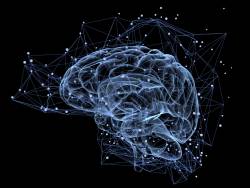SCIENCE AND SPIRITUALITY. PART 2. MATERIALISTIC REALISM
The basis of classical science, including classical physics, is material realism. Over the past 400 years, science has been relying on the basic principle of material realism. It has reached a number of achievements and today this movement is slowing down more and more, because it runs into contradictions between the principles of material realism, everyday life and practical experience in physical research. The starting point of material realism can be considered the mathematician and philosopher Rene Descartes, who came to the conclusion that the world can be thought of as a machine. He divided the world according to the principle of dualism into the objective sphere of matter and the subjective sphere of the mind. Descartes borrowed the idea of objectivity from Aristotle. Its main point is that objects are independent and separated from the mind (or consciousness). Starting from the XVIII century, Newton and his followers were continuing the idea of Descartes. By doing so, they firmly established materialism as the basis for perception of the world.
Materialistic realism asserts that what we call consciousness is only a property of the brain and that everything in the world consists of matter. The materialists claim that the matter is primary.
The Newton-Cartesian view of the world, which we call materialistic realism, began to lose its convicting power in the 19th century, when experimental studies of physicists pointed to the contradiction of the postulates of material realism. The breakthrough happened with the third principle of classical physics by Albert Einstein, who confirmed that the speed of light is not the maximum speed in the universe.
Before we start to talk about monistic idealism, we have to mention 5 basic axioms that make up the philosophy of materialistic realism:
- Strict objectivity
- Causal determinism
- Locality
- Physical or material monism
- Epiphenomenalism
Materialistic realism is also called scientific realism. It follows that materialistic realism is necessary for science. Today many scientists are skeptical about any new evidence of the spirituality of our being, if this evidence contradicts the 5 postulates listed above.
From the beginning of the twenty-first century we know that classical physics, as an example of classical science, is not capable of explaining all aspects of being, it does not give us a complete picture of the world. Modern classical science definitely needs additional parameters to describe and understand the principle of life, which is the basis of all, from the most elementary to the most global, of its manifestations.
Let's explore the new basic principle of existence, which offers us the reality, experiences and facts of the new scientific concept, which is called monistic idealism.
TO BE CONTINUED...

















